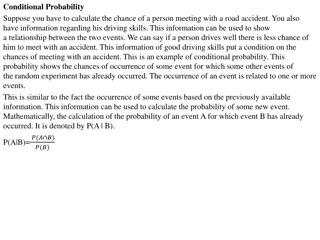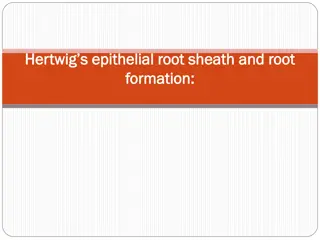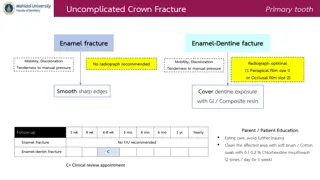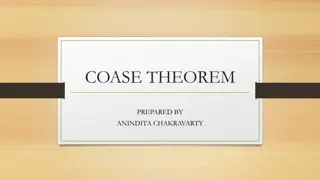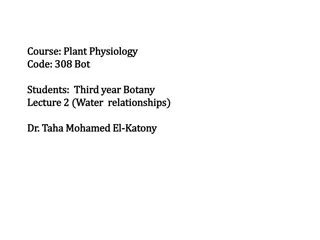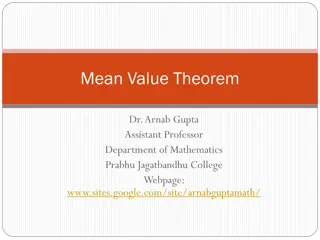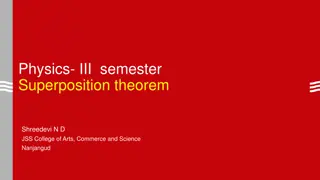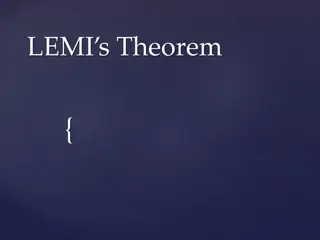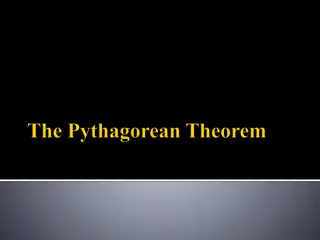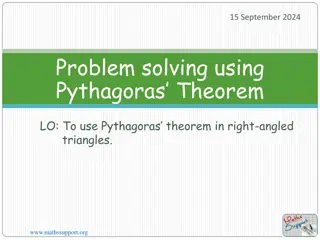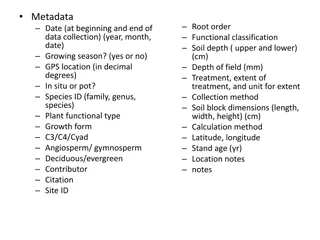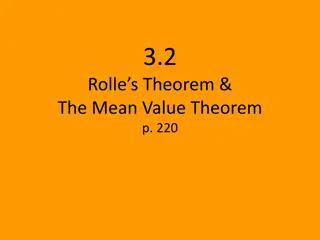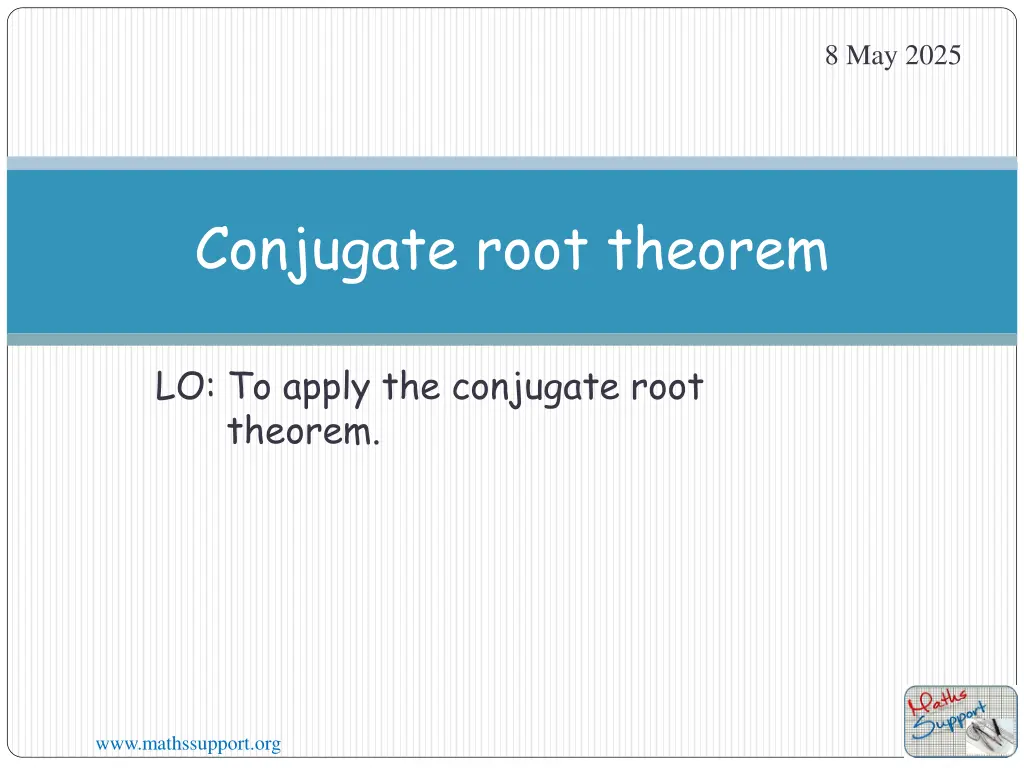
Understanding the Conjugate Root Theorem in Polynomials
Learn how the Conjugate Root Theorem helps predict pairs of roots for polynomials with real coefficients, ensuring if a complex root exists, its conjugate is also a root. Explore examples and methods to find all zeros of polynomials using this theorem.
Download Presentation

Please find below an Image/Link to download the presentation.
The content on the website is provided AS IS for your information and personal use only. It may not be sold, licensed, or shared on other websites without obtaining consent from the author. If you encounter any issues during the download, it is possible that the publisher has removed the file from their server.
You are allowed to download the files provided on this website for personal or commercial use, subject to the condition that they are used lawfully. All files are the property of their respective owners.
The content on the website is provided AS IS for your information and personal use only. It may not be sold, licensed, or shared on other websites without obtaining consent from the author.
E N D
Presentation Transcript
8 May 2025 Conjugate root theorem LO: To apply the conjugate root theorem. www.mathssupport.org
Conjugate root theorem. We know that some polynomials have complex solutions. What might happen if those polynomials have real coefficients? Can we predict pairs of roots? www.mathssupport.org www.mathssupport.org
Conjugate root theorem. Given a polynomial f(x) = anxn+an-1xn-1+an-2xn-2+ +a2x2 + a1x + a0 ak , k= 0, 1, 2, n, and an 0 where that has a complex zero z. z= a + bi f(z)= 0 then its conjugate z* is also a zero of the polynomial f. z*= a bi f(z*)= 0 www.mathssupport.org
Conjugate root theorem. f(z)= 0 If z is a zero f(z) = anzn+an-1zn-1+ +a2z2 + a1z + a0= 0 We have to prove that its conjugate z* is also a zero f(z*)= 0 f(z*) = an(z*)n+an-1(z*)n-1+ +a2(z*)2 +a1(z*)+a0 Using the properties of conjugate numbers: f(z*) = an(zn)*+an-1(zn-1)*+ +a2(z2)*+a1(z)*+a0 f(z*) = (anzn)*+(an-1zn-1)*+ +(a2z2)*+(a1z)*+(a0)* = 0 Conjugate of a power Conjugate of a product f(z*) = (anzn+an-1zn-1+ +a2z2 +a1z+a0)*= (f(z))* Conjugate of a sum (f(z))* f(z*) = QED = 0* = 0 www.mathssupport.org
Conjugate root theorem. Example 1: Given that 4 + 5iis a complex zero of the polynomial. f(x) = x3 6x2+25x + 82 Find all the remaining zeros. Method 1: Successively apply Horner s algorithm to the complex numbers 4 + 5i and 4 5i. 6 25 + + (4 + 5i) ?1= 4 + 5i 1 82 + 4 + 5i 33+ 10i 82 The remaining zeros are: 4 5i ?2= 2 + 5i + 8 + 10i + 1 0 (4 5i) 4 5i 8 10i 2 ?3= 2 1 0 Fully factorise the polynomial f(x) = (? + 2) (? (4 + 5i)) (? (4 5i)) www.mathssupport.org
Conjugate root theorem. Example 1: Given that 4 + 5iis a complex zero of the polynomial. f(x) = x3 6x2+25x + 82 Find all the remaining zeros. Method 2: Use the conjugate root theorem: The first two factors are: (? (4 + 5i))(? (4 5i)) x2 8x +41 x + 2 the last linear factor ?1= 4 + 5i Expanding brackets The remaining zeros are: 4 5i ?2= ?3= Using long division to find x2 8x +41 x3 6x2+25x + 82 x3 8x + 41x ( ) 2 2x2 16x + 82 2x2 16x + 82 ( ) 0 Fully factorised polynomial f(x) = (? + 2) (? (4 + 5i)) (? (4 5i)) www.mathssupport.org
Conjugate root theorem. Example 2: Given that iis a complex zero of the polynomial. f(x) = x4 2x3+6x2 + a x + 5, a , Find the value of a Hence, find all the remaining zeros. Apply Horner s algorithm for ?1 = i. i ?1= 2 + 1 6 + 5 + ? + i ?2= If f(i)= 0 (2 + ?)i 2 + ? i i 2i 1 2i + ?i 5 5i + 2 = 0 = 0 = 2 5i 2 + i + 5 2i + 2 + ? + 5i + (2 + ?)i 0 1 i ? i 2i 5i 2 5 1 0 f(x) = x4 2x3+6x2 2x + 5 = (? i)(? + i)(x2 2x + 5) We need two more zeros. www.mathssupport.org
Conjugate root theorem. Example 2: Given that iis a complex zero of the polynomial. f(x) = x4 2x3+6x2 + a x + 5, a , Find the value of a Hence, find all the remaining zeros. f(x) = x4 2x3+6x2 2x + 5 = To find the remaining zeros we find the zeros of. (x2 2x + 5) (x2 2x ) + 5 + 1 (x 1)2 + 4 (x 1)2= 4 (? i)(? + i)(x2 2x + 5) i ?1= i ?2= = 0 = 0 1 = 0 x 1 = 4 x= 1 2? 1 2i ?4= 1 + 2i ?3= www.mathssupport.org
Thank you for using resources from A close up of a cage Description automatically generated For more resources visit our website https://www.mathssupport.org If you have a special request, drop us an email info@mathssupport.org www.mathssupport.org


